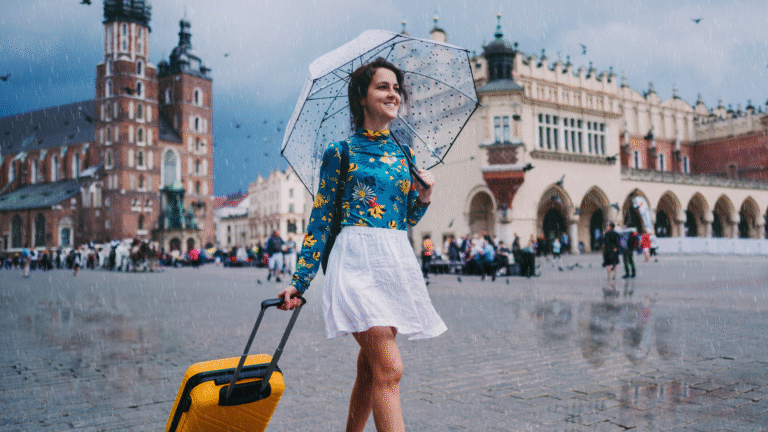Travel photography transcends simple image capture; it captures emotions, cultures, and experiences, weaving a narrative that resonates with viewers. The essence of storytelling through travel photography lies in the ability to convey a location’s unique spirit and moment, allowing others to experience that journey vicariously. Compelling travel photos not only showcase picturesque landscapes but also highlight the human stories and connections formed in diverse environments.
In every frame, the photographer plays the role of a storyteller, using composition, light, and subject matter to evoke feeling and transport the audience. Through thoughtful storytelling, an image can reflect the subtle details of a bustling market, the tranquility of a serene sunrise, or the raw beauty of untamed nature. Each photograph becomes a chapter in the story of a traveler’s adventure, inviting viewers to join in the exploration.
When travel photographers understand the art of storytelling, they can create powerful visual narratives that inspire wanderlust and deepen appreciation for the world’s richness. By focusing on genuine moments and cultural insights, they enable others to see beyond the surface, sparking curiosity and connection through shared visual experiences.
Foundations of Storytelling in Travel Photography
Travel photography serves as a powerful medium to convey stories through visuals. Understanding the foundations of storytelling enhances the ability to connect with an audience and evoke emotional responses tied to culture and places.
The Role of Narrative in Travel Photography
Narrative forms the backbone of effective travel photography. It provides a framework that guides the viewer’s journey through images. A strong narrative pulls together a series of photographs to reveal a coherent story about a destination.
Photographers can utilize techniques such as sequencing and juxtaposition to highlight contrasts and similarities within their visual narratives. Capturing moments that reflect local life, traditions, or landscapes enhances the storytelling element. This approach invites viewers to become emotionally invested and immersed in the experience of the destination.
Establishing Emotional Connection in Visual Stories
Emotional connection stems from relatable visuals that resonate with an audience’s experiences or aspirations. Photographers often focus on expressions, gestures, and interactions between individuals to evoke empathy.
Using close-ups can highlight the feelings and emotions of subjects, inviting viewers to engage with the story on a personal level. Additionally, incorporating elements like natural lighting and candid moments can further enhance the emotional depth. A well-crafted image resonates, allowing viewers to see themselves in the narrative journey.
Understanding Culture and Destination Context
Context is essential in travel photography. Each location has a unique culture, history, and vibe that contributes to its identity. Photographers can strengthen their storytelling by researching and incorporating these aspects into their work.
Capturing specific cultural elements, such as traditional attire, local cuisine, or community events, helps to convey a deeper understanding of a destination. By showcasing authentic moments representative of a culture, photographers can provide viewers with insight into the lifestyle and values of the people within that environment. Engaging with locals can also enrich the storytelling experience, allowing for a more nuanced portrayal of the destination’s essence.
Techniques for Capturing Compelling Visual Stories
Effective travel photography combines various techniques that enhance storytelling. To capture compelling visual narratives, one must focus on composition, lighting, and the portrayal of people while experimenting with different angles and perspectives.
Mastering Composition Techniques
Composition plays a crucial role in storytelling through photography. Utilizing the Rule of Thirds can help in placing subjects strategically, creating a balanced image. A photographer divides the frame into a 3×3 grid and positions focal points along the lines or at their intersections.
Incorporating leading lines guides viewers’ eyes towards the main subject. These lines can be roads, pathways, or architectural features. Additionally, using framing allows elements within the scene to enclose the subject, adding depth.
Symmetry can also create striking images, especially in architecture. Photographers should always consider the background to avoid distractions and enhance the main subject’s impact.
Harnessing Lighting: Sunrise, Sunset, and Reflections
Lighting significantly influences the mood and tone of photographs. The golden hours—sunrise and sunset—provide soft, diffused light, enhancing colors and creating long shadows. This light can evoke feelings of peace and tranquility, perfect for landscape and architecture shots.
Reflections in water, glass, or other surfaces add a layer of intrigue. This technique often doubles the visual interest by incorporating both the subject and its reflection. For instance, photographing a mountain range beside a still lake can create stunning symmetry.
It’s essential to be aware of changing light conditions. Clouds can soften harsh sunlight, while dramatic skies enhance the storytelling element. He or she should adapt quickly to capture the perfect moment.
Photographing People and Capturing Candid Moments
To tell compelling stories, incorporating people is invaluable. Capturing portraits in various contexts can reveal emotions and cultural nuances. Photographers need to communicate with subjects to help them feel at ease, leading to more genuine expressions.
Candid moments often produce the most powerful images. A spontaneous smile or laughter during an interaction provides authenticity. Street photography thrives on these unscripted occasions, highlighting everyday life.
To effectively capture people, consider using a zoom lens or a wide aperture. This technique facilitates a shallow depth of field, isolating subjects from the background. Observing surroundings and anticipating moments can increase the likelihood of capturing extraordinary shots.
Leveraging Different Angles and Perspectives
Trying out various angles can transform an ordinary photograph into an extraordinary one. High angles often create a sense of vulnerability, while low angles can inspire feelings of power or grandeur. A deeper exploration of a scene leads to hidden narratives waiting to be uncovered.
For instance, photographing a bustling market from above can showcase patterns and movements within the crowd. Alternatively, shooting from ground level can highlight the architectural details of buildings towering above.
Incorporating leading lines or unique framing techniques can also guide the viewer’s eye in new ways. Experimentation is key. By continuously shifting perspectives, photographers can consistently find fresh, compelling compositions.
Building Strong Visual Narratives
Creating compelling visual narratives in travel photography requires attention to detail and an understanding of the elements that resonate with viewers. Effective storytellers weave together images that evoke emotions and convey experiences.
Creating a Photo Series That Tells a Story
A photo series should follow a clear theme or concept to engage viewers. Each image should contribute to a greater narrative, creating a visual journey. For instance, a series documenting a local festival can highlight various aspects, from preparations to celebrations.
Each photograph should have a strong focal point and composition. This includes using techniques like leading lines or the rule of thirds to guide the viewer’s eye. A well-curated sequence can evoke feelings of anticipation, joy, or nostalgia, making the story memorable.
Blending Human Connection With Place and Culture
Human connection is vital in building a powerful narrative. Capturing candid moments between people can reveal their stories and the essence of their culture. Photographers should aim to show genuine interactions rather than posed shots.
Incorporating local customs, attire, and expressions enhances the narrative. This immersive approach allows viewers to feel the atmosphere of the place. A photograph of a bustling market, filled with vibrant colors and interactions, conveys not just a location but an experience.
Incorporating History and Community
Incorporating elements of history adds depth to visual narratives. Each location has a story, and photographers can capture historical landmarks or traditional practices that reflect the community’s heritage.
Using images that showcase the evolution of a place or its cultural significance provides context. Including community members in these shots fosters a sense of belonging and pride. This bridges the gap between past and present, enriching the storytelling aspect of travel photography.
Refining and Sharing Your Travel Photographs
To create impactful travel photographs, refinement and sharing are essential steps. Effective post-processing, optimal camera settings, skill development, and captivating storytelling all contribute to the final image.
Using Post-Processing to Enhance Storytelling
Post-processing allows photographers to enhance emotions conveyed through images. Programs like Adobe Lightroom and Photoshop can adjust exposure, contrast, and color balance, making photographs pop.
Key Techniques:
- Cropping: Focuses attention on the subject.
- Color Grading: Sets the mood of the photograph.
- Sharpening: Enhances details, drawing viewers into the scene.
These tools help shape the narrative behind each shot, transforming a simple image into a compelling story.
Optimizing Camera Settings for Storytelling
The right camera settings can significantly impact the quality of travel photographs. Different situations require various approaches to achieve the best results.
Important Settings to Adjust:
- Aperture: Controls depth of field, isolating subjects from backgrounds.
- ISO: Affects the image’s exposure; balance it to avoid noise.
- Shutter Speed: Captures movement; faster speeds freeze action, while slower speeds can convey motion.
Understanding these settings is crucial for storytelling, as they directly affect the visual narrative.
Developing and Showcasing Photography Skills
Building photography skills is a continuous process. Photographers should practice regularly and seek constructive feedback to refine their craft.
Tips for Skill Development:
- Attend Workshops: Learn from professionals and gain hands-on experience.
- Experiment: Try different genres and techniques to discover personal style.
- Review and Critique: Analyze previous work to identify areas for improvement.
Showcasing newfound skills through social media or exhibitions helps build a photographer’s portfolio and invites engagement with a broader audience.
Cultivating Wanderlust Through Compelling Visual Stories
Travel photography serves as a tool for invoking wanderlust. Captivating visual stories invite viewers to explore new places and cultures.
Strategies for Compelling Storytelling:
- Narrative Focus: Each series should tell a coherent story, capturing the essence of a journey.
- Diverse Perspectives: Vary angles and compositions to maintain viewer interest.
- Cultural Elements: Include local scenes, customs, and people to enrich the narrative.
Engaging photographs not only document experiences but also inspire others to embark on their adventures, fueling a cycle of exploration.



